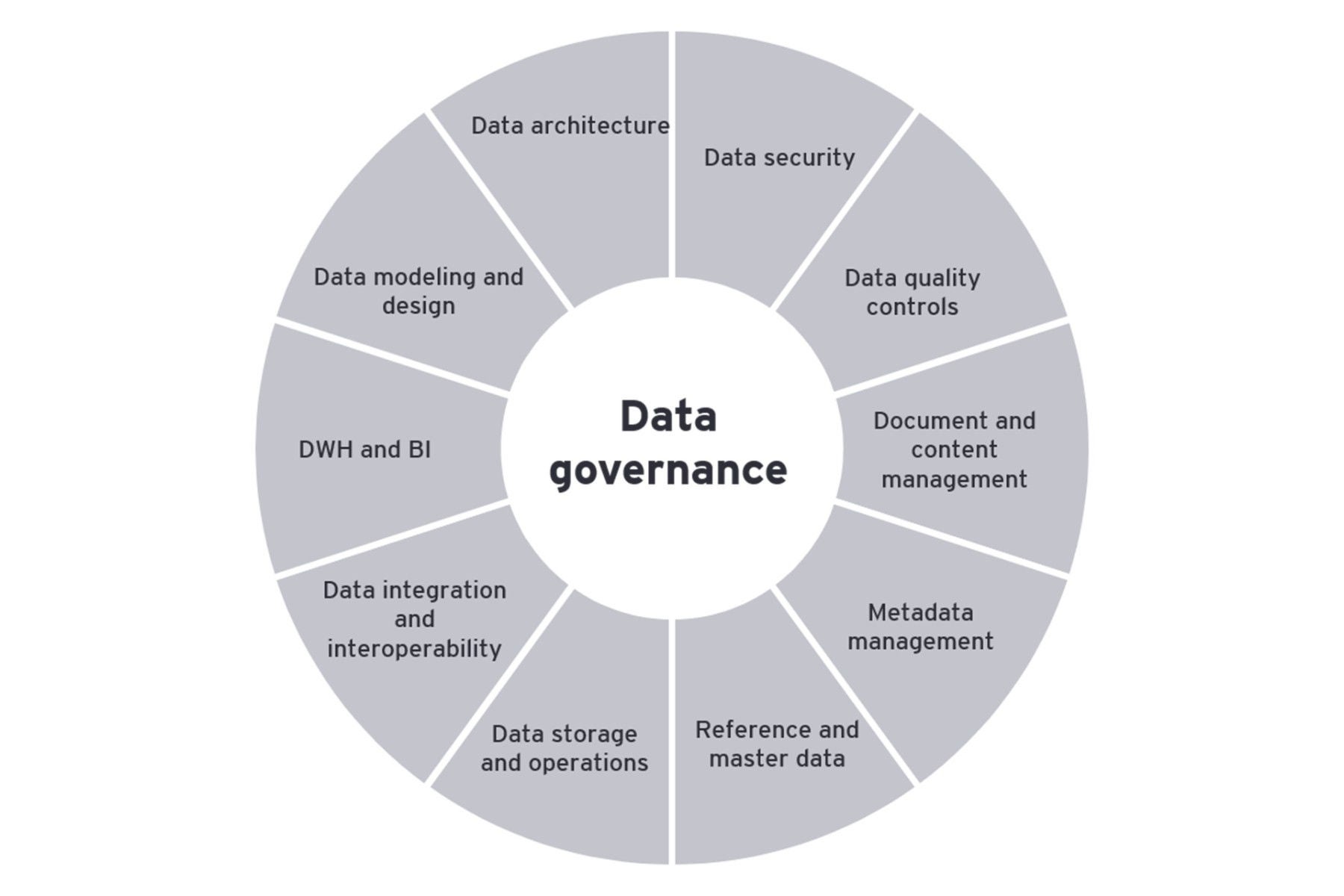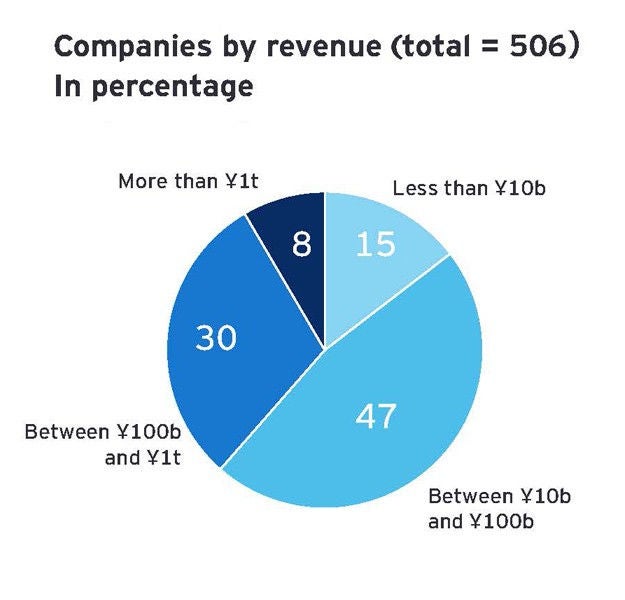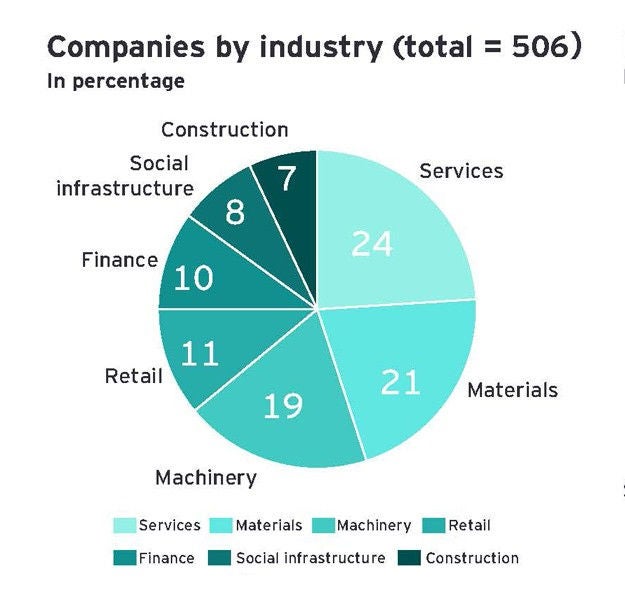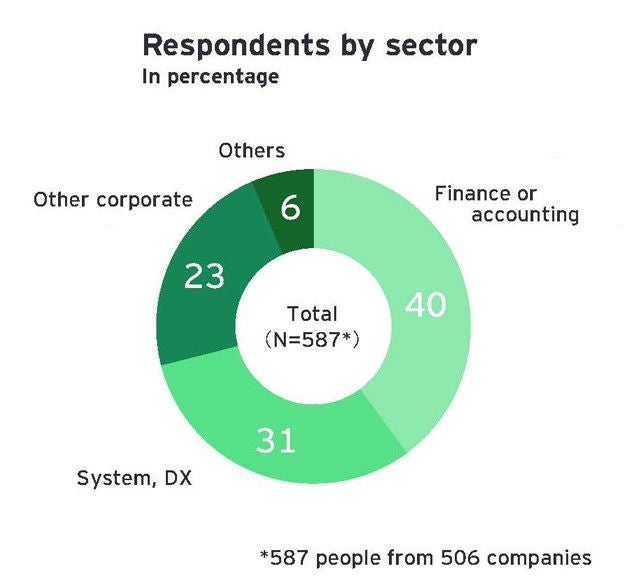EY refers to the global organization, and may refer to one or more, of the member firms of Ernst & Young Global Limited, each of which is a separate legal entity. Ernst & Young Global Limited, a UK company limited by guarantee, does not provide services to clients.

Are you being proactive about data governance, by developing initiatives as well as building a framework?
Stakeholders require companies to disclose information on these measures for sustainability metrics and to resolve social issues. As a corporate function, organizations need to ensure the reliability of both nonfinancial and financial data, to acquire the capability to utilize qualitative and quantitative data, and be ready for information disclosure on a timely basis.
In brief
- According to a survey conducted by EY Strategy and Consulting Co., Ltd. and Ernst & Young ShinNihon LLC, there is a high maturity level in the so-called “defensive” areas for storage and operation in areas within business continuity planning (BCP) and data security.
- In contrast, there is a low maturity level in the so-called “proactive” areas, such as data governance and data architecture.
- Many Japanese companies have neither developed nor made progress in the development of systems to utilize data across their organization.
- Development of data governance is difficult to achieve overnight. However, it is critical to assess the balance between the proactive and defensive sides of the business, and to be able to prioritize the scope of response to increase the overall maturity.

Section 1
The need for data governance and survey overview
What do you need to know in the digital era?
Data utilization today and the status of data governance
In Japan, we see increasing approaches for “data utilization,” aiming for operational efficiency, new business development and improvements to customer satisfaction levels. However, utilizing data is dependent on multiple factors, such as building a system to promote data utilization and improvements to the information technology (IT) infrastructure. Even if management has focused on data utilization, there are numerous cases where little or no progress has been made.
According to the International Data Corporation (IDC) survey (*1), the volume of data distribution in 2025 is expected to be approximately three times as large as 2020. As company data availability increases — along with a need to tackle growing volumes of data that is difficult to manage manually — we are likely to see a continuous evolution of data management technology.
In addition, today’s companies must confront a greater variety of requirements and regulations than ever before. Listed companies should not fall into the trap of pursuing short-term returns. Instead, they should focus on innovation and sustainability through corporate governance reforms that emphasize environmental, social, and governance (ESG) criteria. Even once you have formulated the desired model, there will be a need for further and immediate updates. Companies that are unable to keep pace with transformation risk dropping out of the race entirely. To clarify, to respond to stakeholder requests from society, investors and industry, as well as new legislation and environmental regulations, it is essential to build a data architecture that utilizes data across an organization, develop metadata management, and implement data governance applicable to both a company group and the supply chain.
(*1) Worldwide Global DataSphere Forecast, 2021–2025, IDC, 2021
According to IDC projections, 60,000,000 petabytes (PB) of data were generated globally in 2020, of which 2,900,000 PB (or 4.4%) were generated in Japan. There is an anticipated growth at an annual rate of 22.9% globally and at an annual rate of 22.3% in Japan. By 2025, the volume of data is projected to be approximately three times the level of 2020 — reaching 180,000,000 PB globally and 8,000,000 PB in Japan.
(*2) DAMA
DAMA is a not-for-profit, global association of technical and business professionals in 80 countries, dedicated to advancing the concepts and practices of information, and data management. It promotes the understanding, development, and practice of managing data and information as key enterprise assets.
(*3) Data governance
The term “data governance” is narrowly defined. It means the development of an organizational system for data management and the operation of the PDCA cycle.

Section 2
Identify data governance challenges
Do you see new trends in governance arising from emerging technologies and enterprise-systems?
Organizations should first recognize that data governance is lagging.
From "defensive" to "proactive," the challenge for Japanese companies is to develop company-wide data governance.
The survey results revealed that while Japanese companies are highly mature in the so-called "defensive" areas for data security and BCP, such as data storage and operations, they are less mature in the "proactive" areas, such as data governance, data modeling and design, and data architecture.
The low rating for data governance (with an average of 1.8) clearly evidences a delay in the development of company-wide data governance. This may be a result of the siloed structure of Japanese companies which has long been pointed out. Data is a valuable management resource. Therefore, developing top-down governance throughout an organization is beneficial.
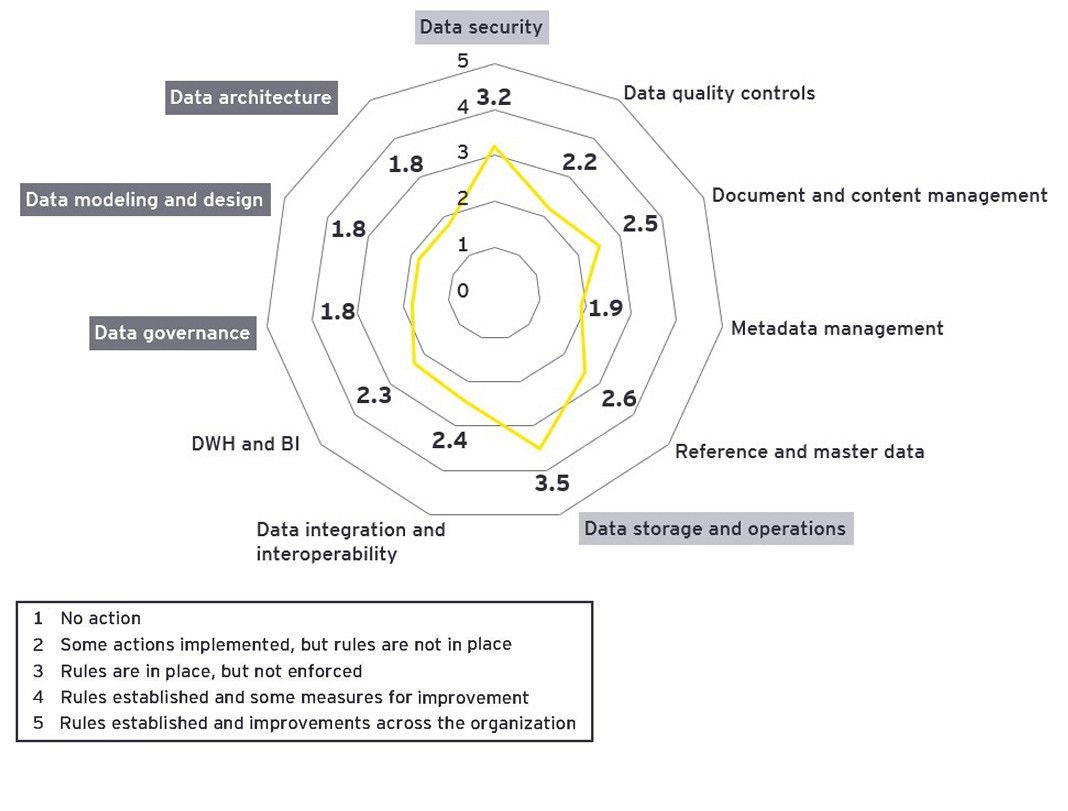
Organizational Imperatives of data governance maturity
Data governance

For data governance rules, companies should first clarify the positioning (e.g., important assets) and risks of data assets that they hold, and then, gradually develop policies based on positioning, the organizations for promoting data utilization and the extent of their authority, and process maps for data utilization.
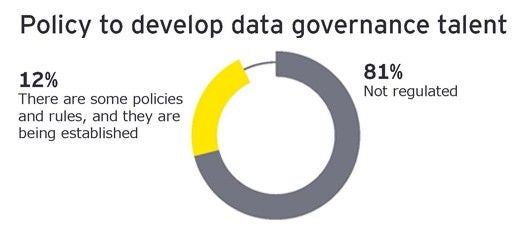
In the “data governance talent development plan,” in-house training, such as company-wide efforts (for improvement of digital literacy), training for core users of big data, training for data scientists, and recruitment and training of external talent, is important. In addition, talent development requires consideration of medium- and long-term recruitment as well.
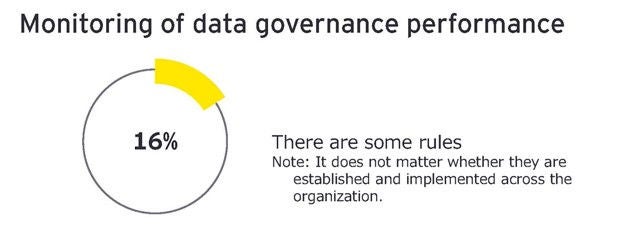
As very few companies have established governance policies, it is not surprising that 84% of the respondents said that they have not established rules. It is important to first establish policies and a medium- to long-term road map, then continuously improve data governance by following the PDCA cycle. The company should set its own targets that refer to a data management system, such as DMBOK, and periodically conduct a maturity evaluation.
Metadata management
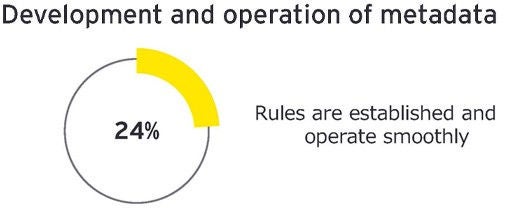
Metadata can promote a common understanding of data’s meaning across an organization. Data is input through an input medium — usually an application system — but the data format (data set) is likely to differ depending on the computer’s specifications. A technical solution is required to treat data as identical in meaning to other data in a different format. This is an important element for companies that aim to achieve data-driven management. The current situation indicates that many companies are not yet aware of the purpose or necessity of sharing data across an organization.
We propose that companies define what should be converted to metadata and prioritize implementation.
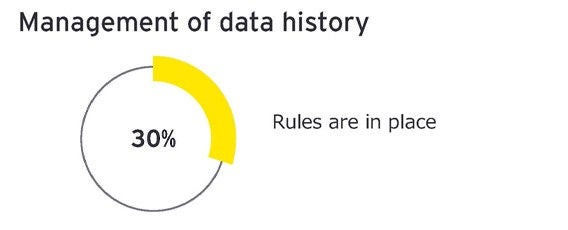
About 30% of the respondents said that they are successfully tracking data. This assumes that, in addition to the development of metadata, computer system divisions have promoted the development of a data tracking system to understand the impact of system development and failures.
Data modeling and design
Data modeling is the visualization of the relationships between data. It is an important input for data utilization and organizes the data commonly held in an organization. For example, data modeling — which is the process of identifying, analyzing and deciding the handling of data requirements — is an essential component of data management.

Data architecture
In this area, we have identified that companies envision data architecture suitable for data utilization, and the introduction and utilization of cutting-edge technologies.
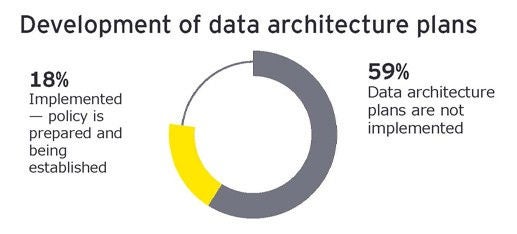
While it is necessary to design an optimized data structure from an organization-wide perspective, 59% of the respondents have yet to do this, indicating that they are not making progress on organization-wide initiatives. More recently, advanced companies have begun to embrace data lakes that are loosely coupled to traditional legacy-system architectures. From the results, we can see that even though business units and specific divisions are carrying out data utilization, they have not reached a point to consider the overall data architecture.

Section 3
Conclusion
What drives data governance? What are the issues and next steps?
From the results of this survey, we see the data governance activities that an organization is required to pursue, but where there is still more to do. In summary, the key points are: drivers of data governance (due to an increased necessity for data governance), specific examples of data governance issues and an overview of next steps related to data governance.
|
Drivers of data governance |
Data governance issues |
Resolutions |
|---|---|---|
|
Drivers related to legislation, regulations and rules
Drivers related to digital trust
Drivers related to business
|
|
|
EY solutions
The EY organization uses a methodology that it has developed to support multiple global and national clients. It can assist your company in enhancing corporate value by making the most of data assets and implementing aggressive data governance.
More specifically, the EY organization provides end-to-end support — from assessments of corporate data usage and data governance maturity, and the development of governance systems for corporate-wide data usage, to the establishment of a framework for incorporating data into business processes and systems.
Co-author
Akira Sato
Senior Manager and Team Leader of the Innovation Center of Excellence (CoE), Ernst & Young ShinNihon LLC Assurance Innovation Headquarters
At Assurance, Akira Sato is responsible for knowledge development for digital transformation (DX) governance and competitive intelligence, as well as the promotion of projects related to digital trust and open innovation. Until 2020, he was a knowledge leader in the media and entertainment sector at EY Strategy and Consulting Co., Ltd., responsible for the customer experience using cutting-edge technology, new business development, and the design and implementation of organizational innovation processes. His knowledge includes systems engineering, project management and the development of innovation by organizations.
*Affiliation and position at the time of publication.
Summary
EY Japan conducted a survey on the maturity of Japanese companies in the development and operation of data governance. For companies which are responding to requests from stakeholders to disclose nonfinancial information, it is essential to develop data architectures and metadata management systems that enable company-wide use of data, as well as adopting data governance approaches that consider their group companies and supply chains.



